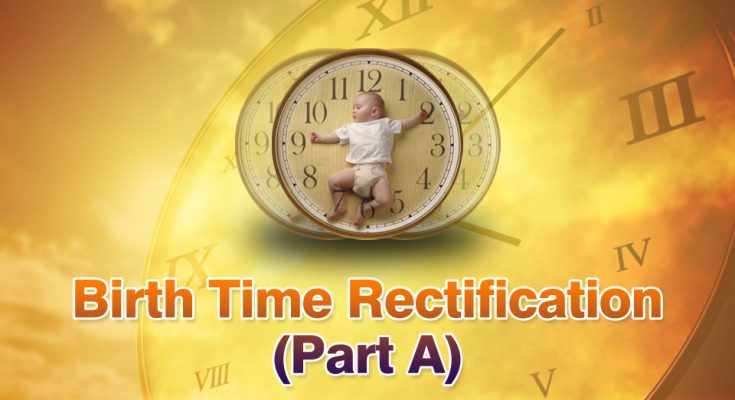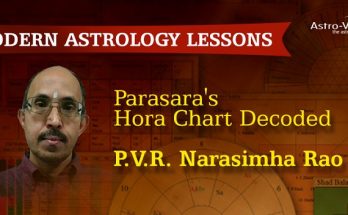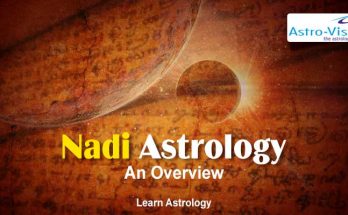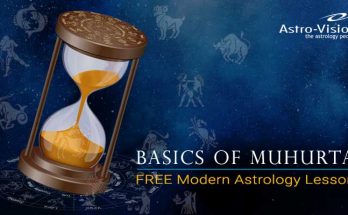Million Dollar Question
One of the reasons put forward for failure of predictions is usually that the exact time of birth is not available or could not be determined. Therefore,the recorded time of birth, most of the time, needs to go under the scanner for verification for its correctness and rectified, if need be. There are some methods given in ancient treatises. Some of these methods refer to the position of the Moon or Mandi. Uttarakalamritha gives a method based on the weekday of the birth and the Nakshatra ruling on that day. Later some modifications for such axiomatic rules have been incorporated by researchers. Perhaps all these factors can add up to provide us with some basic material with which to proceed on this mighty task.
Defining Time of Birth
What is the actual time of birth ? There are different views and opinions. One popular view is that the time of the first appearance of the head, when the child comes out of the womb has to be taken as the birth time. What does one do when instead of the head, the legs come out first? There is a second theory: Kalau bhoopatana smritaa that avers that in Kaliyuga the moment of the child touching the ground has to be taken as birth time. This could have been valid in ancient days. Nowadays there is no chance of the baby falling on the ground because deliveries take place in posh hospitals in maternity wards on delivery tables. Normally we depend on the nurse or midwife to declare the time she takes hold of the baby when it comes out of the womb and places it on the table. The time spent on this exercise could be a few minutes. Therefore, the time noted by the nurse after placing the child on the table could be mostly inadmissible or at the best only approximate and cannot be accurate. There is a third view that the time of the first cry of the child has to be taken as the birth time. In some cases, the child fails to cry until it is slapped by the nurse.
The scriptures tell us that Parikshit was a stillborn child and Lord Krishna had to provide artificial respiration support and slapped it to make it cry. A fourth view is that the birth time can be the moment when the umbilical chord is cut and the child becomes independent of its mother for breathing for which till then, it was dependent on the mother. This can happen in about three to five minutes from the time it comes out of the womb completely.Whatever be the validity of these exercises, the correctness of the time of birth cannot be clinched to any degree of exactitude unless the events in the life of the child become verifiable. For this, one has to wait at least till 30 years of the life of the individual to crosscheck the events with the different ruling periods that would have since passed.
Solar Transit of Nakshatra
One of my early mentors, the late Pariyaram Ganapathy Iyer, who was then the Chief Jail Superintendent of Chennai prison and a renowned astrological savant of those days, well known throughout Kerala; used to tell me that the Sun and its stay in a particular Nakshatra would have a definite say in determining human births and climatic changes. The Sun commences it journey through the 27 Nakshatras from Aswini each year from the First Point of Aries. In the process, it stays for about 13 days in a Nakshatra before it moves on to the next. This period is called kjnattuvela or knyayiruvela (to denote the period of the Sun’s stay in a Nakshatra — knyayiru = the Sun; vela = time or period) in Malayalam.
Method I: Find the Nakshatra ruling that period when the birth occurs. Births during this particular period must occur in the Rasis or signs to which the Nakshatras falling in the 7th, 13th, 17th or 23rd Nakshatras from the Sun Nakshatra belongs. This has to synchronize with the 1st and 2nd part of the day and the 1st and 2nd part of the night respectively.
Example: Take the case of person born in the month of Mesha when the Sun was in Bharani Nakshatra. That is to say that the birth was in Bharani kjnattuvela period. The birth was during the forenoon. Therefore, the Rasi or sign to which the 7th star from Bharani belongs must have been his birth Lagna or Ascendant. The 7th Nakshatra from Bharani is Pushya which in Cancer sign. Cancer may be said to be the Ascendant. My mentor used to
assert that 95% of the horoscopes fell under this category. There could be some exceptions also, as every rule is bound to have.
From Sunrise Time
My mentor also gave me other methods.
Method II: Take the recorded time of birth in Ghatikas and Vighatikas from the local time of sunrise. Multiply this by 4. Add the number of the sign of birth from Aries. Then add 5 if the rising sign is movable; 10 if fixed and 15 if common. Divide the product by 27 and note the balance. This, counted from Aswini, if the birth happens to be in the bright fortnight or from Chitta, if it is in the dark fortnight, must give the Nakshatra (or Anujanma Nakshatra)of birth.
Example: Take the case of a person born after 11 3/4 Ghatikas after sunrise during the bright fortnight of the month in Cancer Ascendant.
11 3/4 x 4 = 47 +4 = 51 + 5 = 56
Dividing 56 by 27, we get a remainder of 2.
Counting from Aswini, we get Bharani.
The person was born in Poorvaphalguni Nakshatra, the Anujanma Nakshatra of Bharani. The birth time as 11% Ghatikas from sunrise can therefore be accepted.
Method III: Multiply the exact time from the sunrise in Ghatikas and Vighatikas by 6. Then note the date of the day of the month as per the Indian
calendar. The date of any day according to months like Mesha, Vrishabha etc., would represent the position in degrees of the Sun on that day in the Rasi represented by the month. Add that date to the product so got. The resultant figure would be the exact degree of the Ascendant counted from First Point of Aries or the starting point of the Zodiac of Mesha.
Example: Let us take the previous example itself for a person born on the 23rd day of Mesha.11 3/4 x 6 = 70 1/2
Adding the date 23 to 70 1/2, we get 93 1/2
Therefore, the cusp of the Ascendant could be the 3rd degree of Cancer, which is correct as the native was born in Cancer Vargottama Ascendant.
Even though Brihat Jataka gives us some broad hints for possible births of males and females, they are debatable. Some hold the view that they could be valid only for Sayana charts.
Uttarakalamrita Methods
Uttarakalamrita gives two distinct methods.
Method I: Multiply the elapsed time from the local sunrise in Ghatikas and Vighatikas by 4 and divide the result by 9. The remainder counted from Aswini, Makha or Moola must coincide with the Nakshatra at the time of birth.
In the above case, 11 3/4 x 4 = 47/ 9 = 5 and remainder 2. Counted from Makha, it tallies with the Nakshatra Poorvaphalguni.
Method II: Divide the elapsed time between the local sunrise and time of birth in Vighatikas by 225 and take the remainder. Divide this reminder into parts of 15, 30, 45, 60 and 75 Vighatikas. The following parts signify the sex of the child.
Male: 00 to 15, 46 to 90 and 151 to 225.
Female: 15 to 45, 91 to 150.
Experts opine that this rule is unacceptable and requires a review. Some suggest the division for male births must be 0-15; 31 to 45; 61 to 75 and the rest, female.
Tattwa Shodana Theory
I was fortunate to cultivate with many celebrated scholars of yesteryears like Dr. Raman and many of the Kerala state, most of whom have since left for their heavenly abode, have been benefited by their erudition and experience more than what all I have learnt otherwise during my entire lifetime. At this juncture I am compelled to remember and recall one such luminary Edapal Soolapaani Warier, who could write the horoscope of Dr. Swarna Nalappad, a week before her actual birth, on a wager with Nalappad Narayana Menon, her uncle, and a literary luminary of Kerala. Dr. Swarna, still alive, has many a time mentioned about the incident, on various platforms and also recorded it in her autobiography. It was he, decades ago, who exhorted me delve into the Tattwa Shodana concept and wanted me to go into the inner imports embedded in the notable work Yuktibhaasha. I could do the first, with satisfactory success but could not venture at all, into the second, so far.
It was in the year 1959 that Dr. Bh. Satyanarayana Rao of Masulipatnam, came out with a small book explaining the Tattwa Theory. He says that a friend of his gave him for perusal a manuscript of elaborate Tables running into 64 pages in foolscap size. That was a list of possible birth times copied from Bhrigu Nadi. The author says he could perceive a cyclic repetition and condensed the same to a single page and subsequently printed it
much to the surprise of his friend. Because his effort attracted much appreciation from scholars, he brought out a book with additional details. Dr. V. Thiruvenkataacharya, of the New College, Chennai and a well-known contributor to the now defunct The Astrological Magazine, was one amongst many who have approved and accepted this theory as an effective tool to rectify birth time.
The theory behind this unique concept is very simple. It relies on the notion that every human born on the earth is constituted by the natural characteristics of the five Tattwas or primary elements Prithvi, Teja, Apa, Vayu and Akasha or the elements of earth, fire, water, air and ether respectively. The connection between the person and the Tattwa to which he or she belongs can be easily identified by noting the distinct characteristics the person carries with him or her.
A brief review these characteristics may not be out of place.
Prithivi Tattwa
This denotes the physical quality which is governed by Mercury, the ruler of the intellect and the brain. Those born under this Tattwa will be self-reliant, enduring, intuitive, prudent and farseeing, calculating, cunning, practical, deft, clever and trustworthy. Being self-centered, as though representing the centripetal force, their thoughts turn inwards, striving with a firm mind for self-interest and progress, worldly gains and possessions, rather than for the acquisition of knowledge in any branch, much less of philosophy and other abstract subjects or religion. Thus, they possess solidarity, stability in finance and mundane happiness.
This type of people often succeeds as moneylenders, financiers, traders, bankers and miners who make a fortune through the mineral products lying under the earth.Brihat Samhita has something different to say about them. It says that the person will have the odour of fragrant flowers, enjoys pleasures, have pleasant breath and will have firm character. Their physical sheen makes the teeth, skin, nails and hair on the body and head radiant, bestowing contentment, wealth and progress in life and causes engagement in religious and meritorious acts continuously.
Jala Tattwa
Governed by Venus and the Moon, this Tattwa can denote the astral or physic characteristics — imagination, fertility of thought, love of arts, physical enjoyment and at times, some lethargy and indolence. It confers activity, versatility, adaptability, sympathy, amicability, harmony, hospitality, decorum, receptivity and submission. When given to lethargy, they become visionaries. However, when aroused into action by the force of circumstances, they become energetic, active and even tenacious. Though they lack in vitality, their efforts in life become fruitful.They often select painting, sculpture, music or horology as their profession or pursuits.When not independent in profession, they occupy subordinate positions. The Tattwa can give them interest in politics.
Brihat Samhita • They drink plenty of water, speak sweetly and agreeably and enjoy delicious things. Glossy, white, bright, clean, and attractive to the eyes, they are endowed with amiable qualities and a tender nature, happiness and prosperity; it can bestow all kinds of success and all-round good human motherly feelings.
Tejo Tattwa
This Tattwa governs the mental and the physical qualities and endows one with energy, restlessness, fury, enthusiasm, vigor and vitality, zeal, aggressiveness and audacity. Such natives are brave and argumentative. They rise to eminence and become wealthy by virtue of some of these sterling qualities. Ambitious and devoted to principles in life, they will be honest and sincere in their efforts. Eminent lawyers, politicians, economists, engineers, surgeons explorers, soldiers and sportspersons fall under this category.
Brihat Samhita • They are sometimes cruel, irascible, hungry and gluttonous, irascible and of the hue of lotus, gold or fire. They can be endowed with brilliance, valor and conquering supremacy and lead to victory. They can get immediate success in their desired intentions.
Vayu Tattwa
This Tattwa governs supra-mental faculty of the Higher Self. It rules the practical or emotional traits of the higher mind or innate wisdom in esoteric activities. Such natives will be the best thinkers, mainly in the domain of philosophy and occult sciences. They will be good planners and with visionary ideas. They are originators but can be poor in execution. This can be through lack of proper surroundings and opportunities. They will be active, agile and alert. They can be to an extent harsh but not cruel, even to those, including their dear ones, sons or relatives who swerve from truth and honesty.
Principled, they will be quick and sharp.They can think or plan much ahead of others. However, they may lack in stability and concentration. Their ideas can run over a wide realm. Can be interested in topics both mundane and spiritual. As Saturn rules Vayu Tattwa and as wind is swift, their thoughts could be likewise, transitory and altering according to the time, place and occasion. Politicians, philosophers, research scholars, geologists and even monks, (if Saturn is strong) belong to this category.
Brihat Samhita • They can be fickle- minded and lean (weak) and easily lose their temper. When Saturn is strong and in an angle, the high- quality effects could get augmented. Rough and dark in appearances, they can be murderers, facing imprisonment, suffering diseases and disasters and may lose accumulated wealth.
Akasha Tattwa
This Tattwa governs ether and electromagnetic waves of light. It can impart original energy in one to create development and vibration. Such native exhibit variation in temper, mind and aptitudes. When environmental circumstances are congenial and encouraging, they reveal great traits of character, manifesting intellect and imagination of a high order. They have extraordinary grit, enthusiasm, power,tolerance and liberality. However, when the circumstances are otherwise, such qualities could often be seen as dissipating and dissolving. With frequency of both positive and negative qualities at work, and sometimes in conflict, they can be optimistic and otherwise yielding and pessimistic. They could be endowed with good constitution and vitality. They take interest in philosophy, finance, law, education and book writing. They can often be good inventors capable of rising to great heights of glory with fame lasting long even after their lifetime. Poets, lawyers, writers, musicians, scholars, educationalists, novelists, inventors, and Yoga teachers come under Akasha Tattwa. They can rise above the sphere of their birth if their Jupiter is very strong.
Brihat Samhita • They could be clever, open mouthed (frank) and good grammarians. They will have limbs with beautiful veins. They get some divine nature, become charitable, are of soft temper, will be devoted to their friends and will be the repository of all good and desirable traits. They can become proficient in fine arts or Tantra Sastras.
These broad traits can easily help identify anyone as belonging to a particular Tattwa.
Courtesy: Modern Astrology (V.S Kalyanaraman) To be continued…









Nice article
Thanks for sharing this information
What about second part